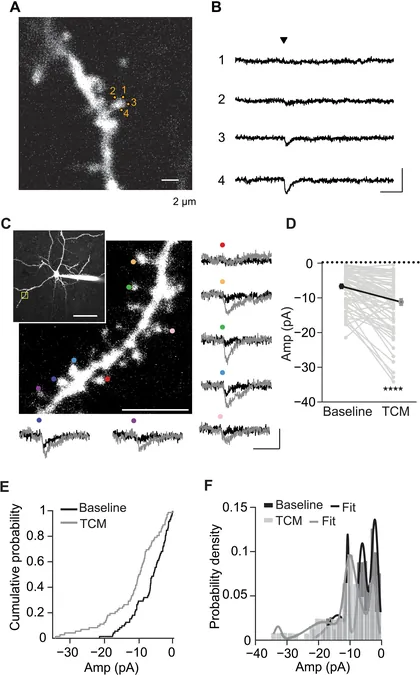
Brain's Hidden Mechanism: How Distinct Transmission Sites Challenge Our Understanding of Plasticity
2025-06-04
Author: Yu
A Groundbreaking Discovery in Brain Function
Researchers at the University of Pittsburgh have delivered a game-changing revelation in neuroscience, overturning long-held beliefs about how the brain achieves plasticity. Their latest study reveals that distinct transmission sites—not a single shared location—are responsible for different types of neural adaptations.
Unraveling the Mystery of Synaptic Transmission
Published in *Science Advances*, this study dives deep into the intricate world of synaptic transmission, where neurons communicate via chemical messengers known as neurotransmitters. These molecules cross a tiny gap called the synaptic cleft to bind with receptors on neighboring neurons, sparking a response essential for learning, memory, and mental health.
Shattering Old Assumptions About Neural Signals
For decades, scientists believed that spontaneous transmissions—those occurring randomly—and evoked transmissions—triggered by sensory input—originated from the same type of synaptic site using the same molecular machinery. This assumption has now been turned on its head.
The Experiment That Changed Everything
In a pioneering mouse model study led by Oliver Schlüssel, an associate professor at the Kenneth P. Dietrich School of Arts and Sciences, researchers discovered that these two types of transmission actually operate from separate sites with unique developmental timelines. First author Yue Yang explained, "We anticipated that spontaneous and evoked transmissions would share a similar development, but they actually diverged after the mice opened their eyes."
A Tale of Two Transmissions
As visual input began pouring in, evoked transmissions strengthened significantly, while spontaneous transmissions plateaued. This divergence hinted at different regulatory mechanisms at play.
Unlocking Hidden Potential
To probe deeper, the team applied a chemical that activated previously silent receptors on the postsynaptic side. The result? A surge in spontaneous activity without affecting evoked signals—clear evidence that these two transmission types operate through functionally distinct sites.
Why It Matters: Implications for Mental Health
This separation allows the brain to maintain a stable background of spontaneous signaling while fine-tuning pathways related to specific experiences. This dual approach supports both stability and Hebbian plasticity—the process that strengthens neural connections through learning.
Broad Impacts on Neurological Disorders
The study opens the door to significant implications for understanding various neurological conditions. Abnormalities in synaptic signaling have been linked to disorders such as autism, Alzheimer's, and substance use disorders. By decoding how these systems function in healthy brains, researchers hope to pinpoint what goes awry in disease states.
Towards a New Era of Neuroscience Research
Yang emphasizes the importance of these findings: "Understanding how the brain distinguishes and regulates different types of signals brings us closer to unraveling neurological and psychiatric disorders." This groundbreaking research not only reshapes our comprehension of brain plasticity but also paves the way for future studies aimed at improving mental health outcomes.




 Brasil (PT)
Brasil (PT)
 Canada (EN)
Canada (EN)
 Chile (ES)
Chile (ES)
 Česko (CS)
Česko (CS)
 대한민국 (KO)
대한민국 (KO)
 España (ES)
España (ES)
 France (FR)
France (FR)
 Hong Kong (EN)
Hong Kong (EN)
 Italia (IT)
Italia (IT)
 日本 (JA)
日本 (JA)
 Magyarország (HU)
Magyarország (HU)
 Norge (NO)
Norge (NO)
 Polska (PL)
Polska (PL)
 Schweiz (DE)
Schweiz (DE)
 Singapore (EN)
Singapore (EN)
 Sverige (SV)
Sverige (SV)
 Suomi (FI)
Suomi (FI)
 Türkiye (TR)
Türkiye (TR)
 الإمارات العربية المتحدة (AR)
الإمارات العربية المتحدة (AR)